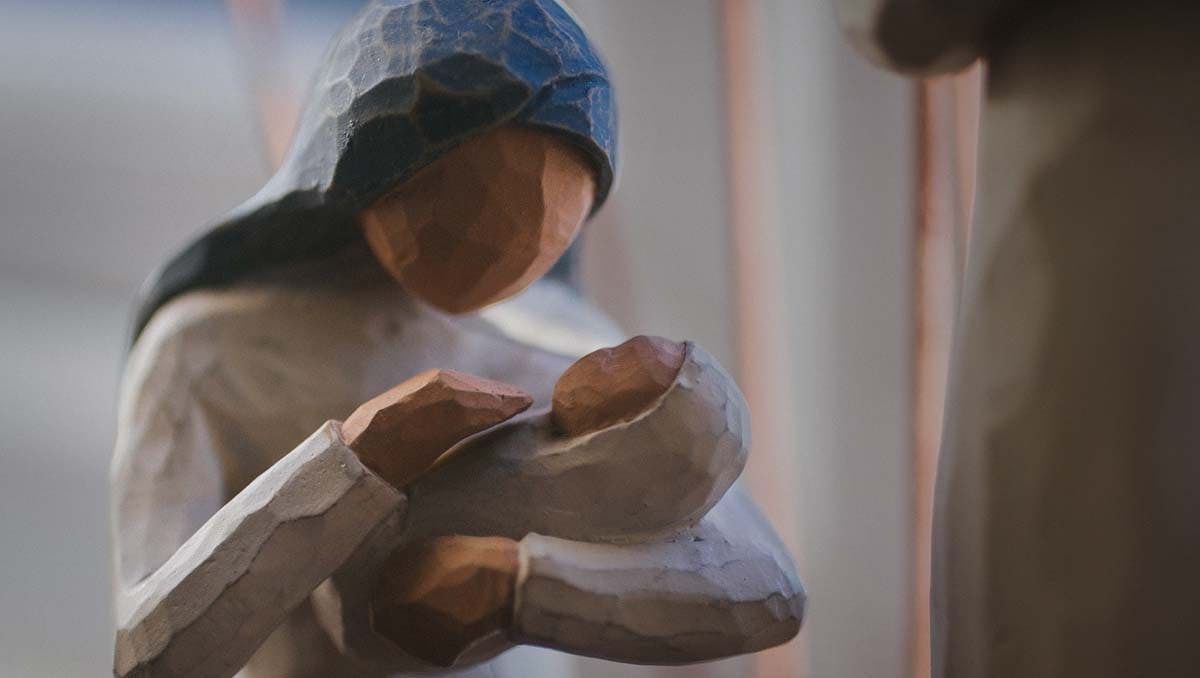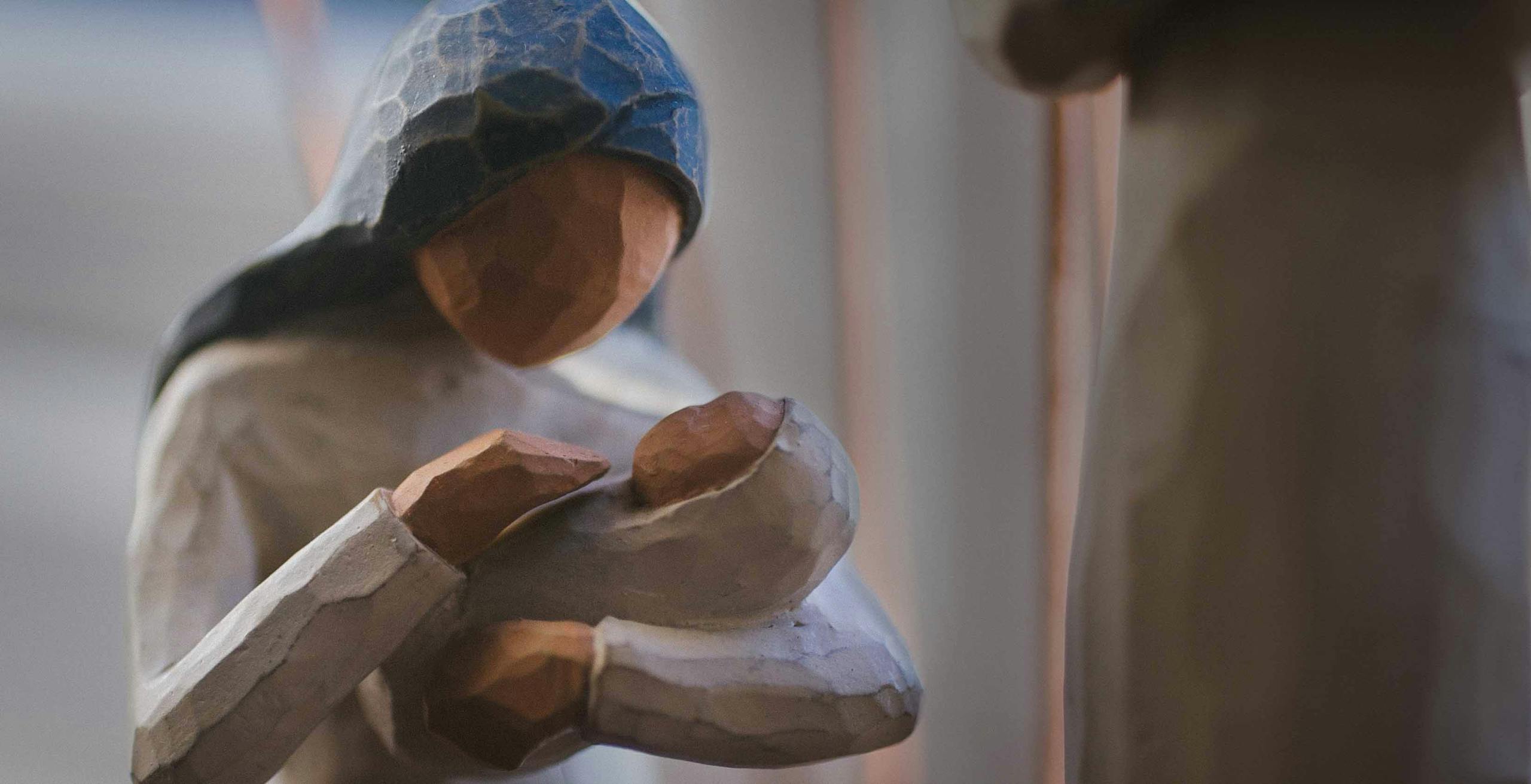
The Nativity Story Is (Surprisingly) Jewish
Uncovering the Jewish character of the central Christmas story
by Sam Rood | December 19 2023
They’ve got Christmas, we’ve got Hanukkah. At least, that’s how Jewish people usually see it. Nativity sets and TV specials feature idealized depictions of the birth of Jesus. The imagery of the Christmas story has so saturated our culture that it’s nearly impossible not to know the broad outlines of the story. Close your eyes and think “nativity.” No doubt you can picture the sleeping baby, the young mother (sometimes with blond hair), the cozy stable hosting quiet animals, and three kings bearing gifts.
For a lot of Jewish people, the whole thing can seem very foreign, even with Jewish-sounding slogans like “born is the King of Israel” and “O Come, O Come, Emmanuel.” However, a closer reading of the original stories of Jesus’ birth in Matthew and Luke reveal that this story is actually deeply Jewish.
A Time of Jewish Suffering
The birth of Jesus in Bethlehem came during a particularly troubled period of Jewish history. It was a little more than a century after the Maccabean revolt against Gentile oppression (which we celebrate at Hanukkah). And it was about 70 years before the Romans destroyed the Second Temple.
At that time, right at the beginning of the first century, the Jewish people found themselves under a brutal occupation of the Roman Empire. Violent clashes resulting from Jewish resistance and brutal Roman retaliation were common. Herod the Great, the ruler of the land of Israel under Roman authority, was famously cruel.
Jesus knew intimately the suffering of his people that has been all too common in history.
In 4 BC, a particularly violent example occurred. A group of Jewish men cut down a Roman eagle that the Romans had put up in the Temple. Herod, who was sick and dying, was so outraged that he had the men burned to death. This instigated a riot against the Romans. After squashing the riot, Rome crucified two thousand Jewish people as retribution.1 That was Rome’s go-to method for crushing dissent: nail people alive to a tree.
Jesus was born to a poor Jewish family right in the middle of this time of intense Jewish suffering. So, he knew intimately the suffering of his people that has been all too common in history.
Miraculous Pregnancies
One of the central storylines of the nativity is also one that seems most incompatible to a Jewish worldview: the miraculous virgin birth of Jesus. However, the Gospels present this miracle as the culmination of a biblical storyline going back to the very first book of the Torah. According to Amy‑Jill Levine, a Jewish (not Messianic) New Testament scholar, claims that the story of Jesus’ birth is drawn from pagan culture fail to account for the many examples of miraculous conceptions found in other ancient Jewish sources.
2
Luke opens his account of Jesus’ life with the story of the birth of Jesus’ cousin, John the Baptist, an itinerate rabbi who would prepare the way for the Messiah (Luke 1:5–25, 57–80). John’s parents, Zechariah and Elizabeth, were both advanced in years and unable to have children. Then one day while Zechariah was carrying out his duties as a Levite priest in the Temple, an angel appeared to announce that Elizabeth would miraculously give birth to a son who should be called John and raised as a Nazarite (Luke 1:14–15).
This was God’s way of showing Israel that He was about to work powerfully among them again.
This echoes the stories of Abraham and Sarah; Isaac and Rebekah; Jacob and Rachel; or Hannah, mother of the prophet Samuel. And like his ancestors, Zechariah struggled to believe the good news (Luke 1:18; cf. Genesis 15:2; 16:2; 18:12–15). This miraculous birth was, if you like, God’s subtle way of showing Israel that He was about to work powerfully among them again.
Of course, the much more famous pregnancy in the story is the virgin conception of Mary (Miriam). As in the story of Zechariah, the same angel appears to Mary to announce that she will become pregnant and bear a son (Luke 1:26–33). But Mary is young and not yet married. She has no reason to suspect that she might be barren because she is a virgin.
Unlike the case with Elizabeth, there is no exact precedence in the Hebrew Scriptures for this. Matthew connects it with Isaiah 7:14.
Therefore the Lord himself will give you a sign. Behold, the virgin shall conceive and bear a son, and shall call his name Immanuel.
Matthew’s point in connecting Isaiah with Jesus is more than a simple proof text. He’s connecting to a theme that runs throughout the Hebrew Scriptures, the theme that God’s hand guides the history of Israel, eventually bringing about salvation for His people.
Like Zechariah, Mary has trouble understanding how this can be possible, but when the angel explains that nothing is impossible with God, Mary responds with faith, “I am the servant of the Lord; let it be to me according to your word” (Luke 1:38).
A Dreaming Joseph
At the time of her miraculous conception, Mary was engaged to a young man in her village named Joseph. Though the angel of the Lord had appeared to Mary in person, the angelic appearance for Joseph came in a dream.
The angel told Joseph,
Joseph, son of David, do not fear to take Mary as your wife, for that which is conceived in her is from the Holy Spirit. She will bear a son, and you shall call his name Jesus, for he will save his people from their sins (Matthew 1:20–21).
The name “Jesus” (Yeshua in Hebrew) means salvation.
Later, when the baby Jesus is in danger, Joseph is warned and instructed to flee with his family to Egypt in another dream (Matthew 2:13). When Herod dies, Joseph receives one more dream instructing him to return to Israel (Matthew 2:19–20). Each time Joseph dreams a dream, he does exactly as instructed.
This Joseph reminds us of another Joseph, the 11th son of Jacob, whom his brothers mockingly named ba’al hachalomot, “the master of dreams” (Genesis 37:19). This Joseph would also dream dreams that would take him (and eventually his family) to Egypt. Joseph’s dreams—and his ability to interpret and follow them—would result in the salvation not only of his family, but of the whole world. As Joseph explained to his brothers,
And now do not be distressed or angry with yourselves because you sold me here, for God sent me before you to preserve … for you a remnant on earth, and to keep alive for you many survivors. So, it was not you who sent me here, but God. (Genesis 45:5–8)
The significance of the similarities between the two Josephs would not have been lost on Matthew or his first readers. These details would have strongly suggested to them that God was bringing the story of Israel to a surprising turning point.
A Rescued Baby
Matthew records that the infant Jesus’ life was threatened by the dangerous and oppressive King Herod. In an effort to stamp out the potential Messiah who might one day overthrow his dynasty, Herod killed all the male children in Bethlehem and in all that region who were two years old or under (Matthew 2:16–18).
Matthew records this story in such a way that it draws our minds to the story of Moses, as Dr. Levine explains:
In this account, known as [the] “Slaughter of the Innocents,” Matthew parallels Herod with Pharaoh (Exodus 1:22) and Jesus with Moses (Exodus 2:2–3). Just as Moses’ life is threatened when Pharaoh mandates that children be cast into the Nile, so Jesus’ life is threatened when Herod orders the massacre of the children. This paralleling of Jesus to Moses continues throughout this Gospel.3
There’s an interesting parallel between Matthew’s story of Jesus and one ancient midrash (Jewish commentary on Scripture). The midrash gives a reason why Pharaoh ordered the drowning of babies in the Nile: Pharaoh’s astrologers had predicted that a future deliverer of Israel had been born.4 In Matthew, King Herod’s murderous rampage was also triggered by the news from astrologers. As Matthew records it, Herod learned about Jesus’ birth from a group of Magi. Gentile Christian tradition has mistakenly understood the Magi to be kings or simply “wise men.” But in reality, the Magi were astrologers from Persia.5
Where is he who has been born king of the Jews?
Now after Jesus was born in Bethlehem of Judea in the days of Herod the king, behold, wise men from the east came to Jerusalem, saying, “Where is he who has been born king of the Jews? For we saw his star when it rose and have come to worship him.” (Matthew 2:1–2)
This star is a reference to a Messianic prophecy in Numbers 24:17.
I see him, but not now;
I behold him, but not near:
a star shall come out of Jacob,
and a scepter shall rise out of Israel;
it shall crush the forehead of Moab
and break down all the sons of Sheth.
More than Just an Echo
These are just a few of the numerous Jewish elements in the nativity story that echo our Jewish history. The setting in the land of Israel; Luke’s focus on the city of Jerusalem and the Temple (where Jesus’ brit milah—ceremony of circumcision—occurs); the prophetic songs sung by Mary, Zechariah, and Anna which echo ancient psalms; and the Messianic title “Son of David” are all elements of the story that are illuminated by a familiarity with Jewish history and prophecy as recorded by the Hebrew Scriptures.
So, this Christmas, I invite you to read the ancient Jewish account of Jesus’ birth in the Gospel of Matthew. It’s a Jewish story about a Jewish baby born to a Jewish family at a pivotal time in Israel’s history. And once every year, this thoroughly Jewish story captures the imaginations and hopes of the world.
Endnotes
1 David Van Biema, “Jerusalem At the Time of Jesus,” Time, April 16, 2001.
2 Professor Amy-Jill Levine, “The Jewish Origins of the Christmas Story,” TheTorah, accessed 12/15/2023.
3 Levine, “The Jewish Origins.”
4 Midrash Rabbah, Exodus 1:21.
5 Ancient astrology was a learned and serious enterprise, significantly different than what typically passes for astrology in the modern world. Astrologers were essentially astronomers who sought to read signs of earthly political and economic significance from the stars. Somewhere in Christian history, the Gentile church came to see the Magi as three kings. Obviously, a story of three kings is easier to understand than a story of an unknown number of Persian astrologers to show up looking for the Messiah. But this misunderstanding makes us miss Matthew’s true purpose in telling this part of Jesus’ story. The fact that the Magi came all the way from Persia to find the Jewish Messiah speaks to the witness that the Jewish people during their exile in Babylon/Persia had on the educated classes in those pagan empires. For more on that back story, see Daniel chapters 1–6.

